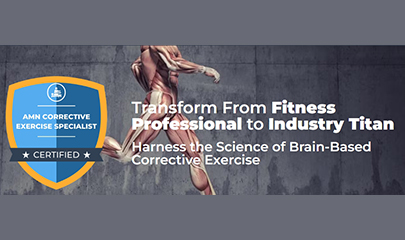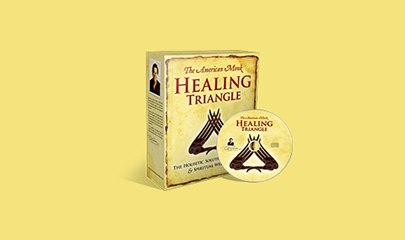-
×
 Cultural Literacy for Religion: Everything the Well-Educated Person Should Know By Mark Berkson
1 × $5,00
Cultural Literacy for Religion: Everything the Well-Educated Person Should Know By Mark Berkson
1 × $5,00 -
×
 Native Peoples of North America By Daniel Cobb
1 × $5,00
Native Peoples of North America By Daniel Cobb
1 × $5,00 -
×
 Sacred Success Coaching Method By Eden Carpenter
1 × $139,00
Sacred Success Coaching Method By Eden Carpenter
1 × $139,00 -
×
 REELS ACADEMY By Anneke Odendaal - Pink Sparrow Social
1 × $279,00
REELS ACADEMY By Anneke Odendaal - Pink Sparrow Social
1 × $279,00 -
×
 Be The Boss Of Wordpress By Emma Kate
1 × $23,00
Be The Boss Of Wordpress By Emma Kate
1 × $23,00 -
×
 6th Dimension Lifetime Access By Elisa Canali
1 × $23,00
6th Dimension Lifetime Access By Elisa Canali
1 × $23,00 -
×
 Historic Mansion Composite Stock Assets by Clinton Lofthouse
1 × $8,00
Historic Mansion Composite Stock Assets by Clinton Lofthouse
1 × $8,00 -
×
 Bookkeeping for Crafters By Lauren Venell
1 × $5,00
Bookkeeping for Crafters By Lauren Venell
1 × $5,00 -
×
 The History and Achievements of the Islamic Golden Age By Eamonn Gearon
1 × $5,00
The History and Achievements of the Islamic Golden Age By Eamonn Gearon
1 × $5,00 -
×
 This Day in History: August By Wondrium
1 × $5,00
This Day in History: August By Wondrium
1 × $5,00 -
×
 Options Academy Elevate By Simon Ree - Tao of Trading
1 × $109,00
Options Academy Elevate By Simon Ree - Tao of Trading
1 × $109,00 -
×
 Mixing Electronic Music In Ableton Live By Isaac Cotec
1 × $5,00
Mixing Electronic Music In Ableton Live By Isaac Cotec
1 × $5,00 -
×
 Weightless Wealth By Elisa Canali
1 × $31,00
Weightless Wealth By Elisa Canali
1 × $31,00 -
×
 Advanced Overcoming Objections By Andy Elliott
1 × $69,00
Advanced Overcoming Objections By Andy Elliott
1 × $69,00 -
×
 2000 (currently 27 hours): Exercise Mechanics 1 + Orchestration By Exercise Professional
1 × $39,00
2000 (currently 27 hours): Exercise Mechanics 1 + Orchestration By Exercise Professional
1 × $39,00 -
×
 Effortless Millionaire 3 Day Event By Elisa Canali
1 × $46,00
Effortless Millionaire 3 Day Event By Elisa Canali
1 × $46,00 -
×
 Unexpected Economics By Timothy Taylor
1 × $5,00
Unexpected Economics By Timothy Taylor
1 × $5,00 -
×
 The Medieval Legacy By Carol Symes
1 × $5,00
The Medieval Legacy By Carol Symes
1 × $5,00 -
×
 Creative Strategy Master Course By Nicole Crowell
1 × $54,00
Creative Strategy Master Course By Nicole Crowell
1 × $54,00 -
×
 Affiliate Marketing Course By Sara Finance
1 × $46,00
Affiliate Marketing Course By Sara Finance
1 × $46,00
CranioSacral Therapy: Recognizing the Body-Mind Continuum By John Upledger
$74,00 $15,00
SKU: KOB.56962yK4p7k
Category: Health
Tags: CranioSacral Therapy, John Upledger, Recognizing the Body-Mind Continuum
Craniosacral therapy: Recognizing the body-mind continuum – Instant Download!
Let’s embark on a captivating adventure to uncover remarkable insights that spark your curiosity and elevate your understanding
CranioSacral Therapy: Recognizing the Body-Mind Continuum By John Upledger
Overview

Craniosacral therapy: Recognizing the body-mind continuum
Introduction
John Upledger’s transformative work, Craniosacral Therapy: Recognizing the Body-Mind Continuum, serves as a gateway into a world where the boundaries between the physical body and emotional states blur. Upledger, a prominent figure in the realm of alternative therapies, guides us through the principles of craniosacral therapy (CST) with an unwavering belief in the innate wisdom of the human body. This book is not just a technical guide; it represents a radical re-thinking of how we perceive health and healing, positing that our emotional and physical wellbeing are intricately linked. Through an exploration of cranial anatomy and an understanding of how trauma is held within the body, readers are encouraged to adopt a holistic perspective on their health journey. This article will detail the key themes from Upledger’s work, elaborate on the techniques and philosophies underpinning CST, and delve into its profound implications for both practitioners and patients.
The Philosophical Foundation of Craniosacral Therapy
1. Holistic Approach to Healing
At the heart of Upledger’s writing lies the idea that healing cannot be compartmentalized; rather, it’s a holistic process that necessitates an understanding of the interconnectedness of body and mind. This philosophy challenges traditional medical paradigms, proposing that emotional traumas, stresses, and unresolved psychological pain often manifest as physical symptoms. Upledger suggests that CST practitioners must approach treatment with the understanding that alleviating physical discomfort may also require addressing the emotional or psychological roots of that discomfort.
Practitioners of CST learn to cultivate a deep sense of awareness and presence, allowing them to tune into the subtle signals emitted by the body. As Upledger puts it, the therapist must act as a facilitator one who listens patiently to the body’s story rather than imposing a unilateral treatment strategy. For example, during the therapy sessions, the practitioner may use gentle touch to explore areas of tension, thereby guiding the release of deeply held emotional blockages.
2. The Body-Mind Continuum
The tangible connectivity between physical sensations and emotional states is what Upledger defines as the body-mind continuum. This idea reinforces the notion that every physical ailment carries an emotional component. A notable illustration of this principle can be drawn from anecdotal evidence; clients who undergo CST often report not just relief in physical symptoms such as chronic pain but also a newfound clarity and emotional release. This aligns with findings from studies showing that emotional regulation can significantly improve physical health outcomes.
By emphasizing the body-mind continuum, Upledger enables practitioners to discover patterns in their patients’ conditions understanding, for example, that a patient suffering from migraines may be experiencing unresolved anxiety or stress. This integrative view leads to more comprehensive treatment plans that offer holistic support rather than treating symptoms in isolation.
Practical Applications of Craniosacral Therapy
1. Physiological Dynamics
Delving into the technical aspects of CST, Upledger outlines the significance of cranial bones and cerebrospinal fluid flow. The intricate dynamics of the cranial structure play a crucial role in the therapy; the subtle movements of the cranial bones and the rhythm of the cerebrospinal fluid are essential components that practitioners must learn to assess and interpret.
Key Components of CST:
| **Component** | **Importance** |
| Cranial Bones | Facilitate cranial movement and protect the brain |
| Cerebrospinal Fluid | Acts as a cushion for the brain and spinal cord, essential for healing |
| Suture Lines | Allow for movement and flexibility of the cranial bones |
Upledger explains that by gently manipulating the craniosacral system, practitioners can identify and remedy restrictions that may be affecting overall health. Learning these dynamics requires extensive training, as practitioners must develop a tactile awareness that allows them to sense subtle changes in the client’s physiology.
2. Emotional Dimensions of Healing
While the physiological aspects are pivotal, Upledger equally emphasizes the psychological dimensions of CST. The emotional factors tied to physical ailments cannot be overlooked; rather, they should be embraced as vital signposts in the journey toward healing. As practitioners engage with patients, they are tasked with creating a safe space one that allows individuals to explore their emotional landscapes without fear or judgment.
Through CST, an individual might find themselves revisiting past traumas or emotional wounds that manifest as chronic pain. For instance, during a session, a feeling of tightness in the neck could bring forth memories of a distressing event, facilitating a process of emotional release. It is here, within this therapeutic setting, that the magic of craniosacral therapy truly occurs.
The Impact on Practitioners and Patients
1. Empowerment Through Knowledge
Upledger’s work serves as an invaluable resource not only for therapists but also for individuals seeking to empower themselves through understanding. By recognizing the intertwined nature of their physiological and emotional health, patients can begin to take charge of their own healing journeys. CST encourages self-awareness and introspection, allowing patients to feel more in tune with their bodies.
Readers will discover that the insights provided in Upledger’s book facilitate a unique dialogue, creating a bridge between the practitioner’s knowledge and the patient’s experiences. For example, patients are prompted to observe how their emotional states correlate with bodily sensations, nurturing a deeper connection to their own health.
2. An Expanding Field of Practice
The rise of CST has led to a growing interest in alternative therapies within the healthcare community. As more practitioners integrate these holistic practices into their modalities, the significance of Upledger’s work becomes increasingly evident. Research underscoring the efficacy of CST showing reductions in stress-related symptoms and improvements in emotional well-being affirms the transformative potential of this therapy.
Moreover, as the landscape of healthcare evolves, Upledger’s insights contribute to an emerging paradigm that values patient-led healing initiatives. The therapeutic relationship is enhanced as patients become more actively involved in their care, leading to greater satisfaction and well-being.
Conclusion
Craniosacral Therapy: Recognizing the Body-Mind Continuum by John Upledger stands as a beacon for those curious about the profound connections between their minds and bodies. Offering a comprehensive overview of both the physiological intricacies and the emotional depths of healing, Upledger invites readers to explore the transformative potential of craniosacral therapy. Through his integrative approach, he champions the idea that true healing encompasses more than just symptom alleviation; it is about fostering an environment where emotional and physical well-being coalesce. As practitioners and patients delve into this therapeutic practice, they embark on a journey that honors the wisdom of the body, promotes healing, and ultimately bridges the divide between mind and body.
Frequently Asked Questions:
Innovation in Business Models: We use a group purchase approach that enables users to split expenses and get discounted access to well-liked courses. Despite worries regarding distribution strategies from content creators, this strategy helps people with low incomes.
Legal Aspects to Take into Account: Our operations’ legality entails several intricate considerations. There are no explicit resale restrictions mentioned at the time of purchase, even though we do not have the course developers’ express consent to redistribute their content. This uncertainty gives us the chance to offer reasonably priced instructional materials.
Quality Control: We make certain that every course resource we buy is the exact same as what the authors themselves provide. It’s crucial to realize, nevertheless, that we are not authorized suppliers. Therefore, the following are not included in our offerings: – Live coaching sessions or calls with the course author.
– Entry to groups or portals that are only available to authors.
– Participation in closed forums.
– Straightforward email assistance from the writer or their group.
Our goal is to lower the barrier to education by providing these courses on our own, without the official channels’ premium services. We value your comprehension of our distinct methodology.
Be the first to review “CranioSacral Therapy: Recognizing the Body-Mind Continuum By John Upledger” Cancel reply
You must be logged in to post a review.



















Reviews
There are no reviews yet.